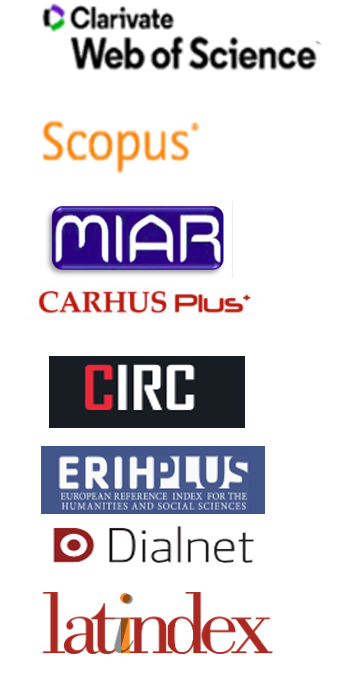Beyond the Museum: The Conservator of Contemporary Art in the Private Sector. Challenges, Procedures and Solutions
Abstract
On a purely academic basis, conservation focuses on the maintenance of artistic and historical objects for the enjoyment of present and future generations. Implicitly, this is commonly related to museums and public cultural institutions, as well as the conservation work that takes place in such places. However, conservation does not only work in public sectors, as the private sector is a considerable source of work for many conservators who employ their knowledge and experience in often demanding situations. In addition to the problems of contemporary art with regards to new techniques, concepts and materials, there are eventualities and damages that could have easily been avoided if certain guidelines had been set beforehand. The following article presents how contemporary art collecting and conservation are related with the aim of introducing situations experienced by conservators and proposing concrete solutions that can be easily applied.
Downloads
References
AIC (2021). Spring CAN! Conversation: Contextualizing the decision-making model in contemporary art conservation, Talks by Bloser, Joy; Betancor, Julia; Wachowiak, Miroslaw; and Opeña, Marieke. Live Webinar, American Institute for Conservation [4 de abril de 2021]
BOLAÑOS, M. (2009). Historia de los museos en España: memoria, cultura, sociedad. Madrid: Trea.
BRODIE, N.(2019). “The ‘Art World’ of the Auction Houses: The Role of Professional Experts”. Arts 8 (2): 56. https://doi.org/10.3390/arts8020056 [11 de abril de 2021]
DALL’AGLIO, S. (2020). “The great collector and his man in Rome. Leopoldo de’ Medici and his letters to Ottavio Falconieri, 1662–75”. Journal of the History of Collections, 32 (3): 431-442.
DELBOURGO, J.(2017). Collecting the World: The Life and Curiosity of Hans Sloane. Londres: Penguin.
GARCÍA F; DE LOS SANTOS, M. ET AL.(2018) ”Los orígenes, 1819-33”. En: Portús Pérez, Javier (coord.) Museo del Prado 1819-2019. Un lugar de memoria. Madrid: Museo Nacional del Prado. 22-47.
GIEBELER, J. ET AL. (2019). The Decision-Making Model for Contemporary Art Conservation and Presentation. Colonia: Cologne Institute of Conservation Sciences / TH Köln.
GILI, P. (2013). “Awareness in rolling, research about its effects and use of polyurethane memory foam”, CeROArt [Online], EGG 3 | 2013.
ICOM-CC (2009). Terminología para definir la conservación del patrimonio cultural tangible. 15a Conferencia Trienal, New Delhi, 22-26 de septiembre de 2008.
LINDEMANN, A. (2006). Collecting Contemporary Art. Koln: Taschen.
MCINTOSH, WILLIAM D. Y SCHMEICHEL, BRANDON (2004). “Collectors and Collecting: A Social Psychological Perspective”. Leisure Sciences, 26(1): 85-97.
NTOULIA, ELISSAVET (2017). “The birth of the public museum”, Wellcome Collection, Stories. <https://wellcomecollection.org/articles/W_0kHhEAADUAbHiJ> [11 de abril de 2021]
PARDO-TOMÁS, JOSÉ (2018). “La historia natural y el coleccionismo en gabinetes de curiosidades y museos de papel”. María Sybilla Merian y Alida Withoos: mujeres, arte y ciencia en la Edad Moderna. Santander: Editorial Universidad de Cantabria, 59-66. http://hdl.handle.net/10261/172187
RICHARD, MERY T ET AL. (Eds.) (1997) Art in Transit: Handbook for Packing and Transporting Paintings. Washington DC: The National Gallery of Art.
SHELLEY, MARJORIE (1987) The Care and Handling of Art Objects: Practices in the Metropolitan Museum of Art. Nueva York: The Metropolitan Museum of Art.
WOOLLEY, LEONARD (1962). Ur Excavations. the Neo-Babylonian and Persian Periods. Londres: The Trustees of the British Museum.
- Copyright and intellectual property belongs to author. Author guarantees editing and publishing rights to Ge-Conservación Journal, under a Creative Commons Attribution License. This license allows others to share the work with authorship and the original source of publication acknowledgement.
- Articles can be used for scientific and educational purposes but never for commercial use, being sanctioned by law.
- The whole content of the article is author’s responsibility.
- Ge-Conservación Journal and authors may establish additional agreements for non-exclusive distribution of the work version published at the Journal (for example, on institutional repositories or on a book) with acknowledgment of the original publication on this Journal.
- Author is allowed and encouraged to disseminate his works electronically (for example, on institutional repositories or on its own website) after being published on Ge-Conservación Journal. This will contribute for fruitful interchanges as also for wider and earlier citations of the author’s works.
- Author’s personal data will only be used for the Journal purposes and will not be given to others.









